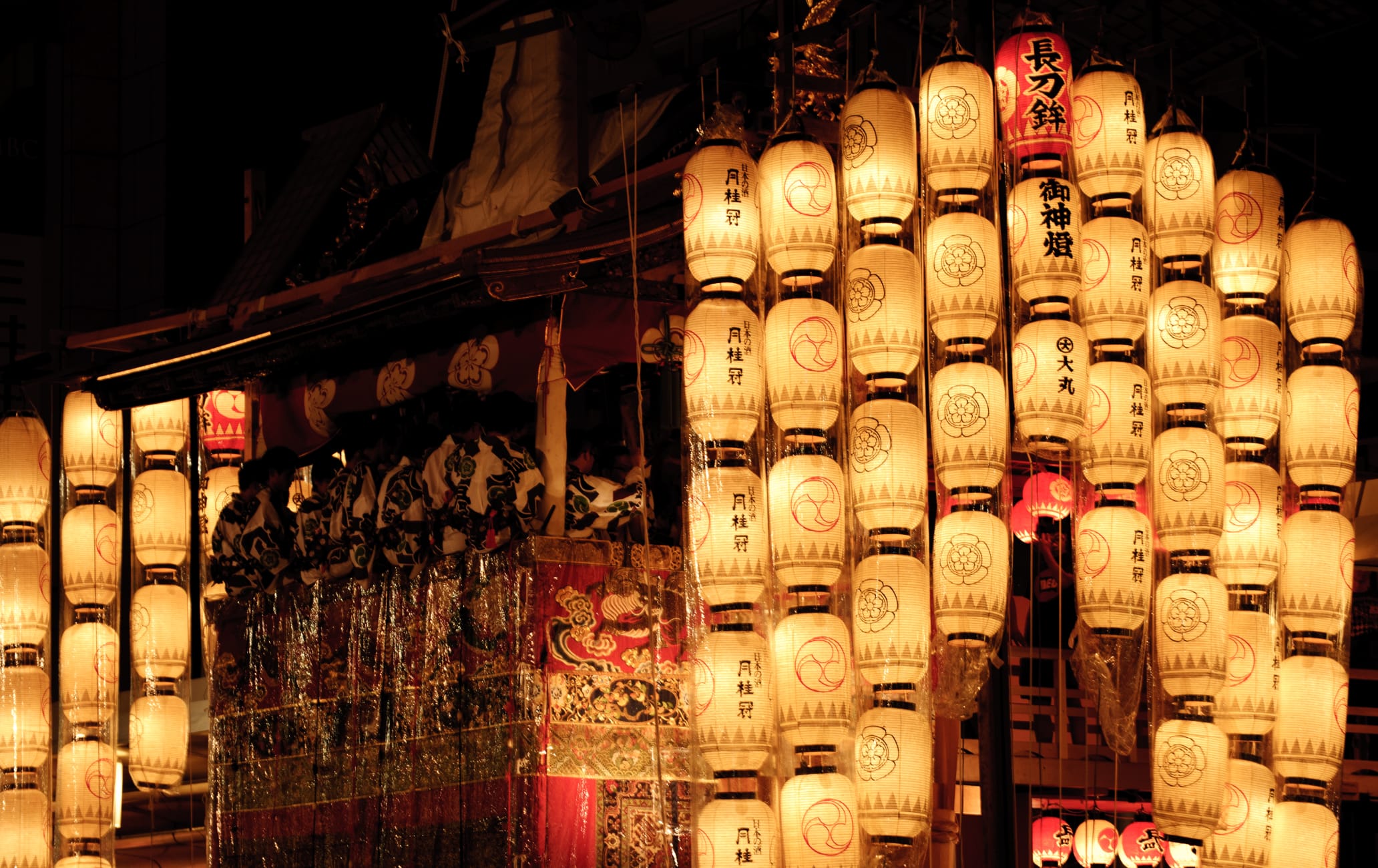Celebrate Kyoto's hottest summer festival—the legendary Gion Matsuri
The Gion Matsuri dates from 869 and is the country's biggest festival. The festival turns the city into a huge party, especially during the two periods in mid-July when elaborately-decorated multi-ton floats are displayed and then pulled through the streets.
If you hope to attend this wildly popular festival, make sure to reserve your accommodation months in advance.
Don't Miss
- The Yoiyama evening street parties on the three days preceding the parades
- Family heirlooms displayed during the Byobu Matsuri
- Watching the giant floats execute hair-raising turns
- Soaking up the atmosphere with the locals in yukata, and snacking on street food
How to Get There
The Gion Matsuri takes place in central Kyoto and can be easily accessed by subway, bus, taxi or on foot.
The main celebrations of the festival are centered around Shijo, Kawaramachi, and Oike streets. It is relatively easy to find a spot to watch the parade from along the route, provided you pay attention to potential road closures.
Quick Facts
Gion Matsuri is held over a period of one month in July
The main processions take place on July 17 (Saki Matsuri Junko) and July 24 (Ato Matsuri Junko)
The biggest floats in the parade are known as yamaboko and weigh up to 12 tons

The origins of the festival
The Gion Matsuri began in 869 as a way to appease the gods during an epidemic. Every year, as per tradition, a local boy is chosen as a sacred messenger to the gods. From July 13 until the first parade ends on July 17, he sits on one of the many elaborate floats and his feet never touch the ground.

A float at Gion Matsuri
Gion's gorgeous floats
There are two types of floats at the Gion Festival: yama and hoko. Hoko can be up to 25 meters tall and weigh up to 12 tons. Both yama and hoko are elaborately decorated and adorned with exquisite craftwork such as woven fabric, dyed textiles and sculptures. They are so beautiful that they are sometimes referred to as "mobile art museums." There are two processions during the festival when the floats are paraded through downtown Kyoto from 9 a.m. to 2 p.m. The largest of the two is on July 17 with 23 floats, and the second on July 24 with about half that number.

Night parties
Each parade is preceded by three evenings of celebration known as Yoiyama. (The 14,15,16 and 21, 22, 23 of July respectively.) These three nights allow people to visit the floats, which are parked in different areas of the city. Around the floats, people can buy good luck charms called chimaki and enjoy local street food. Join the locals in their colorful cotton yukata robes and soak up the atmosphere of this traditional Kyoto festival.
See the private treasures of the people of Kyoto
The Folding Screen Festival, known as the Byobu Matsuri, is an event that takes place during the Yoiyama days of the festival. Wealthy families in the Shinmachi and Muromachi areas show off their private treasures such as screens and kimonos, displaying them in front of their houses or even welcoming people into their homes for viewing. Local merchants also proudly exhibit their art collections.

























































